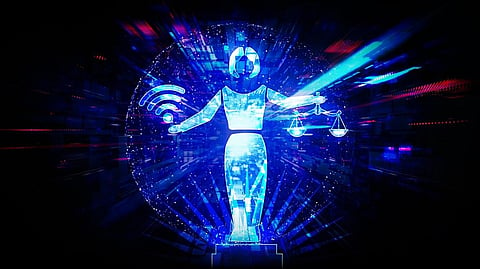An online-centric approach in a digitally divided India cuts off vulnerable from welfare schemes
Anita (name changed), a widowed marginal farmer from Putupara village in Nuapada district, Odisha, applied for the Krushak Assistance for Livelihood and Income Augmentation (Kalia) scheme in January 2019.
She received her first instalment on February 21, 2019. However, unlike the other farmers in her village, the second instalment was never credited to her account.
The scheme aims to provide financial assistance to small and marginal farmers in the state, with a focus on increasing agricultural productivity and income.
Also read: Breaching the digital divide
Under the scheme, eligible farmers receive financial assistance of Rs 25,000 over five agricultural seasons. The programme intends to improve their livelihoods and reduce poverty in the state. A person per farm family is eligible for benefits under the scheme.
On not receiving further instalments under the scheme, she complained to Krishak Sathi (agriculture mate) in her panchayat, the last person in the agriculture department to support and assist farmers.
However, the matter is yet to be resolved. On checking her credentials on the Kalia portal, we found that she had been declared ineligible for the scheme as someone else in her family was already receiving benefits.
Further investigation revealed that her ration card (a base document for identifying family members under the scheme) listed only two members: Anita and her son.
On checking her son’s credentials in the portal, we found he was not a beneficiary of the scheme. When Anita learned the reasons for her exclusion, she felt the state had unfairly denied her the benefits. She should have at least been informed of the reasons for exclusion.
On the other hand, the state government boasts about Kalia as a fully digitised scheme with registration, validation, money transfer and grievance redressal all done through an online portal.
Anita’s case highlights the challenges that arise when a digital-centric approach is taken for social protection programmes. The situation worsens, particularly when the beneficiaries are barely literate and from remote villages with limited access to technology and the internet.
Being a barely literate farmer living in a remote village with no access to the internet, Anita would not have known how to check her status on the Kalia portal, which is only in English.
Additionally, she would not have been able to receive the one-time password required to access the portal since she doesn’t have a mobile phone. And, she would not have known when the online grievance redressal portal/option opened on the Kalia portal.
Anita’s case is not an isolated incident. Thousands of people like her are trapped in the digital maze of social protection programmes. The digital divide in India is a well-documented problem.
At the end of 2021, only 48 per cent of India’s population had internet access, according to a study by consumer insight firm Nielsen.
In rural areas, this number drops to 41 per cent. Additionally, the literacy rate in rural India is only 63 per cent, compared to 82 per cent in urban areas.
These statistics reveal the challenges faced by rural communities in accessing and utilising digital services. The implementation of social protection programs in rural India must take into account the digital divide and ensure that the last person is not left behind.
In a rights-based framework, it is the state’s duty to ensure that not a single eligible person is left out of a program. The principle of natural justice requires rejected applicants to be informed of the same in a mode they can access and understand.
She should be given a chance to defend herself and explain why she should not be excluded from the program. The state could have at least informed her of her ineligibility and exclusion from the program rather than leaving her to fend for herself.
In the increasingly digitised world, it is crucial that the state develops and implements processes designed with the last person in mind, particularly those who are most in need and with limited knowledge, awareness, and access to digital systems.
Odisha government’s 5T mission includes transparency and technology, but this should not be limited to an online-only approach. The state should also consider providing support for submitting necessary documents and ensuring that their grievances are addressed effectively.
Read more:
Views expressed are the author’s own and don’t necessarily reflect those of Down To Earth


